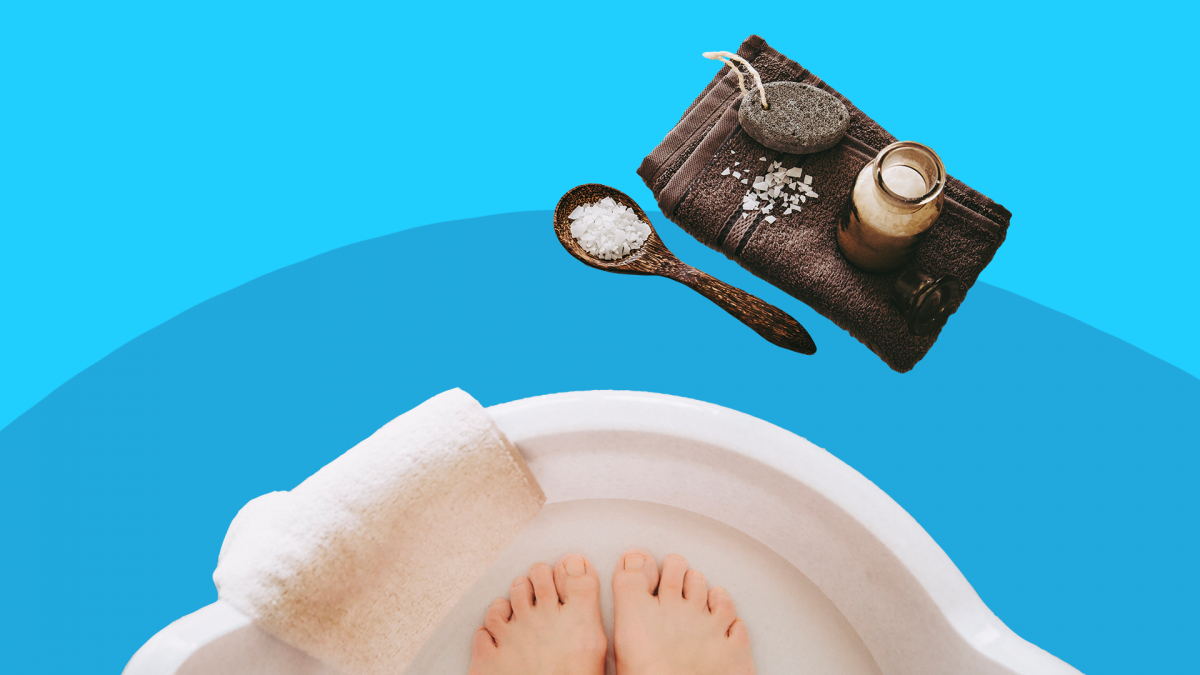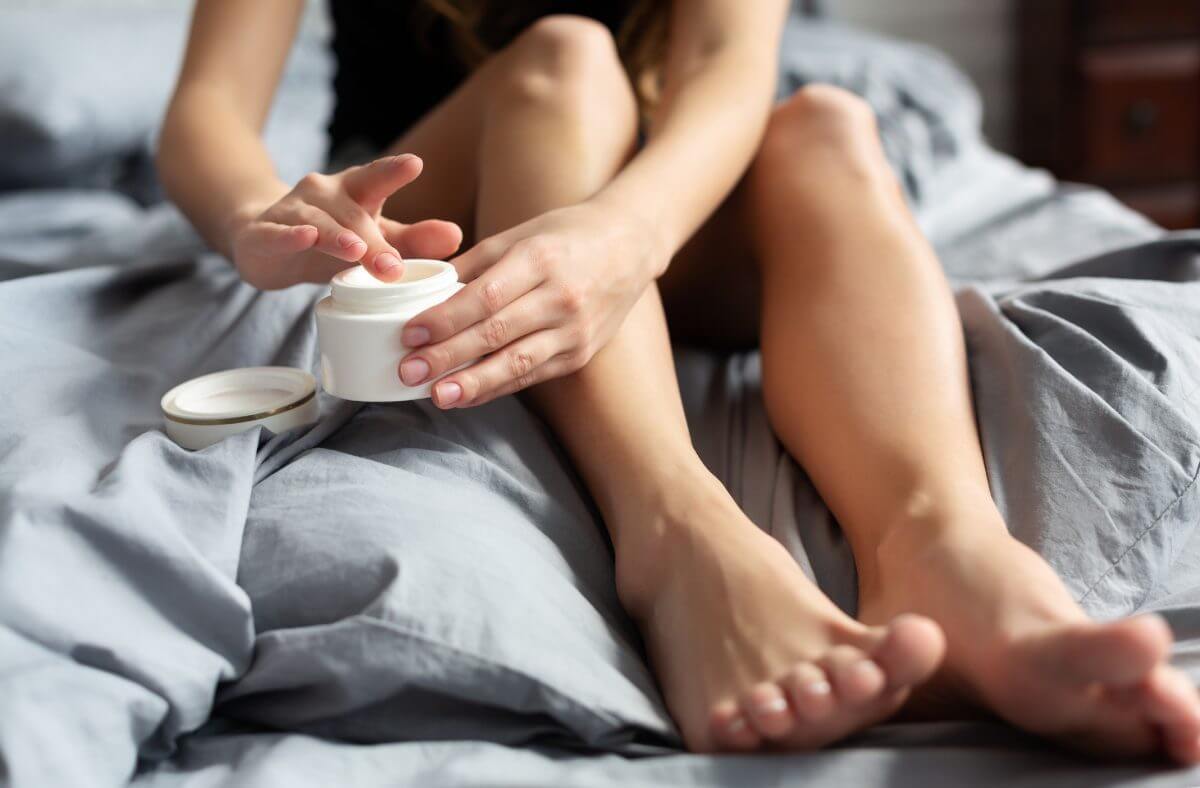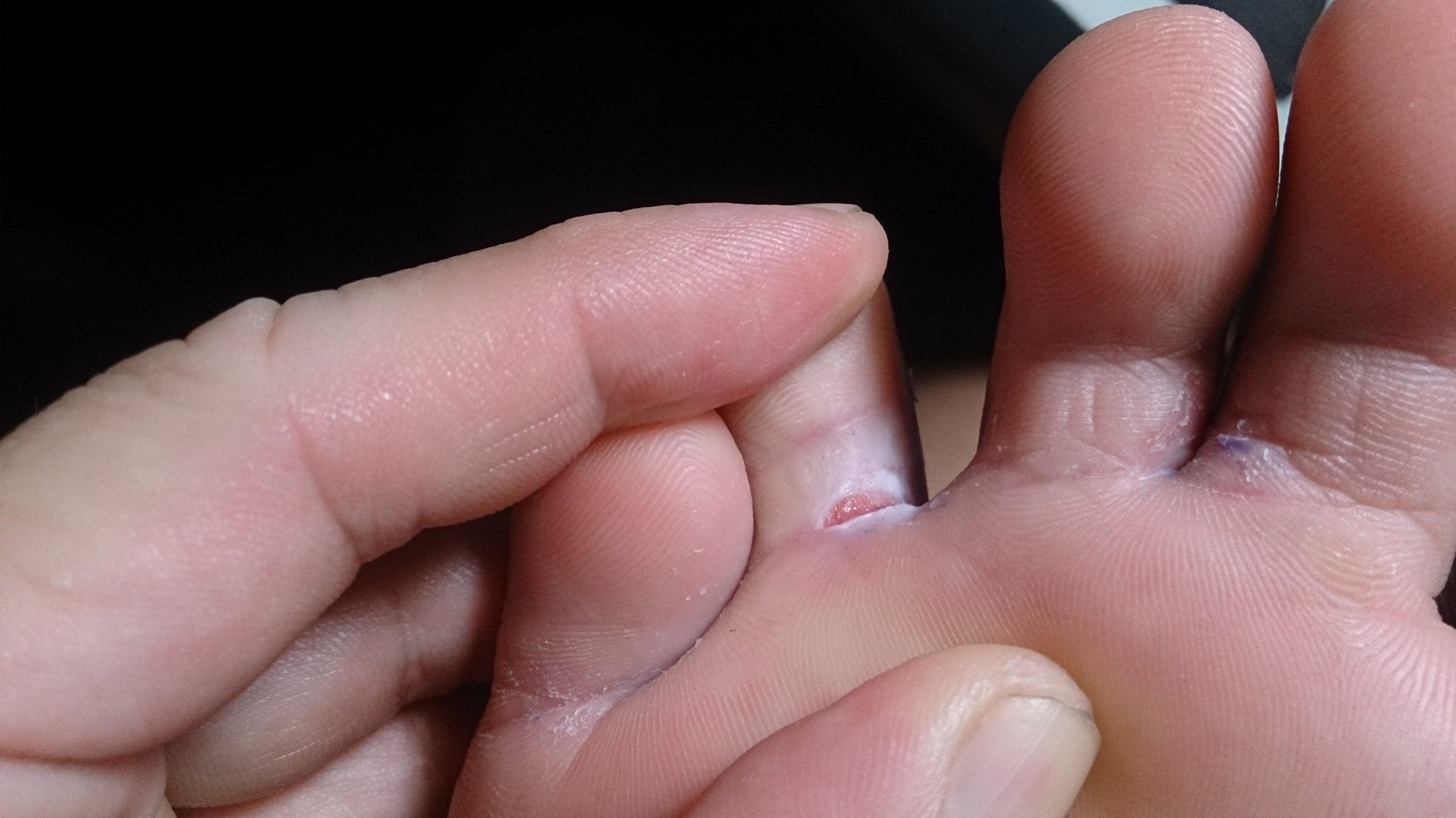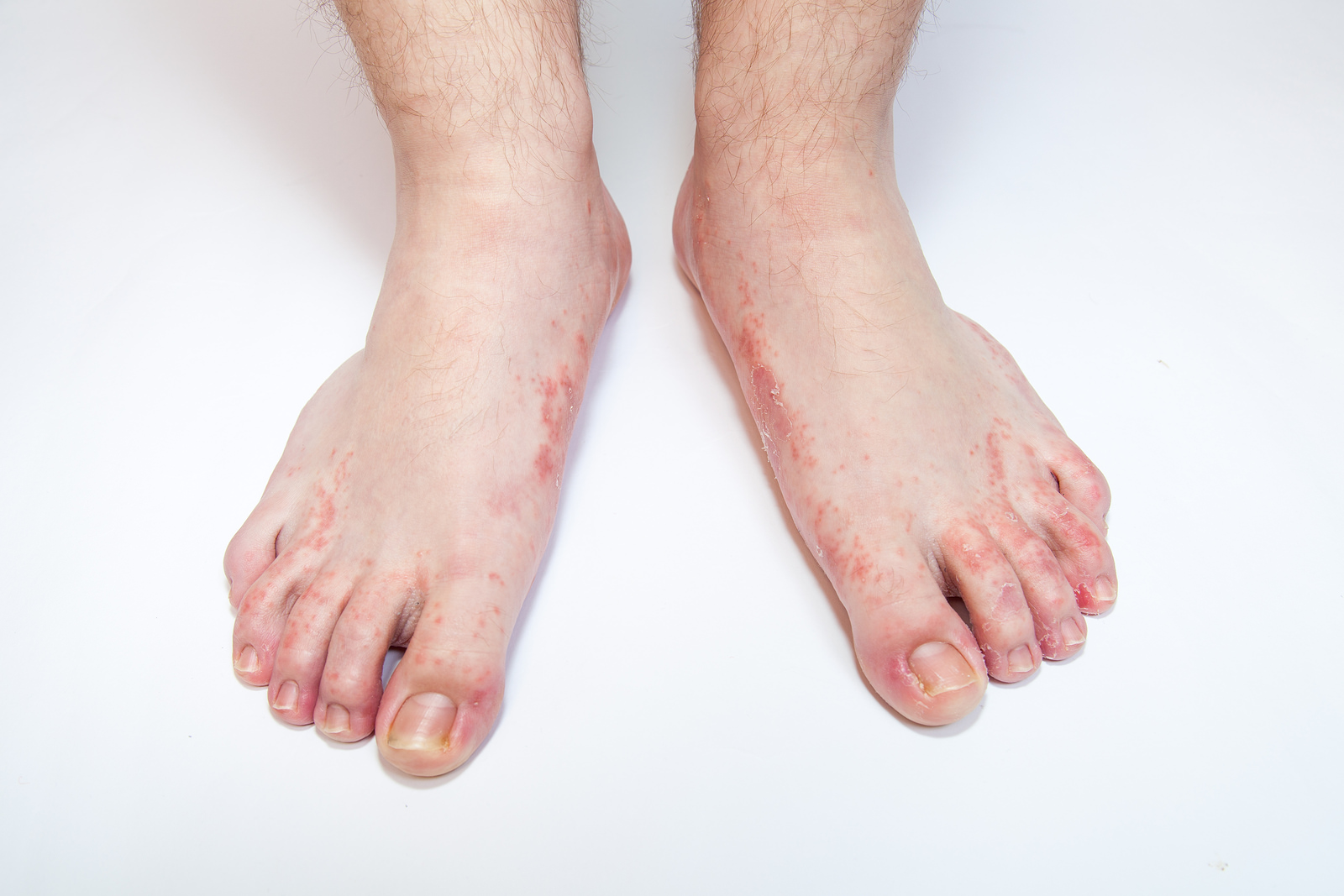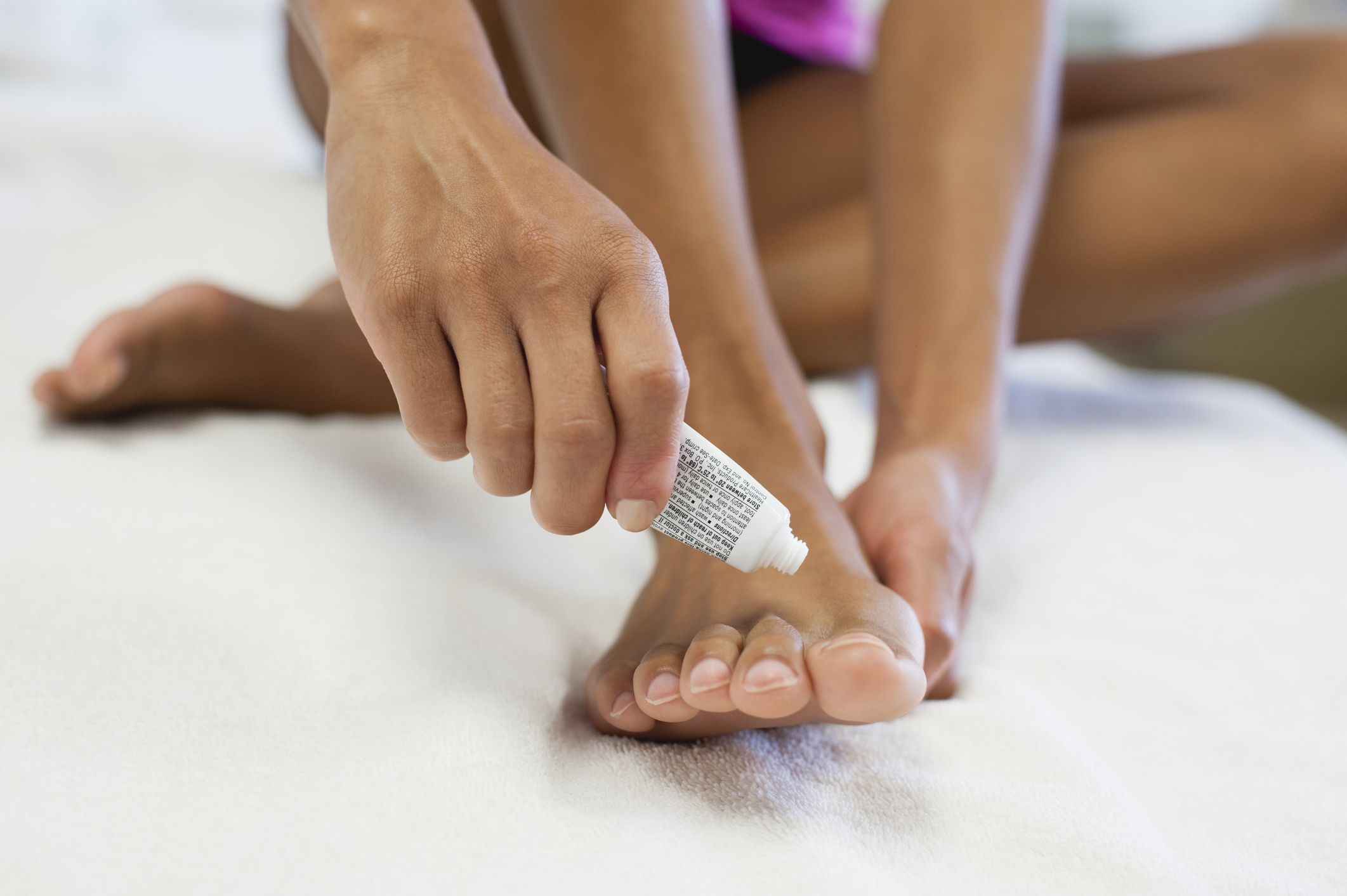A. Home Remedies for Athlete’s Foot
The athlete’s foot, also known as tinea pedis, is a fungal skin infection that typically starts between the toes. It causes a scaly and itchy rash that can have painful or burning sensations. In some cases, it can also cause ulcers or blisters, which can be very painful.
Fortunately, the athlete’s foot can be extremely receptive to treatment at home. Here are 10 home treatments that are known to be effective.
1. Over-the-counter treatments
There are several over-the-counter treatments for athlete’s foot. These can be in the form of powders, sprays, ointments and lotions. Many cases of athlete’s foot respond well to OTC treatments and may not require other options.
You can apply these treatments directly to the affected area and use them for at least 1 week after the disappearance of symptoms to prevent the infection from returning immediately.
2. Hydrogen peroxide
Hydrogen peroxide can effectively kill the Trusted Source fungus on the surface of the foot, as well as any surface bacteria that may cause infection.
Pour hydrogen peroxide directly over the affected area. Note that it can burn, and should bubble, especially if you have open wounds. Do this twice a day until the infection has dissipated.
3. Tea tree oil
Tea tree oil has antifungal and antibacterial properties, which is one of the reasons why it is commonly used to treat many fungal infections (including ringworm and candidiasis).
In a 2002 study, Trusted Source found that daily application of tea tree oil can treat both the symptoms of the athlete’s foot and the fungus that causes it within a few weeks.
To treat the athlete’s foot, mix a carrier oil like hot coconut oil with tea tree oil for a concentration of 25 to 50 percent tea tree oil. Apply it to the affected area twice a day.
4. Neem oil
Both neem oil and neem leaf extracts have incredible antifungal capabilities – a reliable source that can help fight the athlete’s foot. You can apply the neem oil (or extract) directly on the affected area two to three times a day and massage it into the skin. This can also be useful in the treatment of infections that develop under the toenails.
5. Rub alcohol.
Similar to hydrogen peroxide, many families have alcohol on hand to make clean cuts. Like hydrogen peroxide, rubbing alcohol can help kill the fungus on the surface of the skin.
You can apply it directly to the affected area or soak your feet in a foot bath made with 70% alcohol and 30% water for 30 minutes.
6. Garlic
Garlic may smell strong, but it can be an effective topical treatment for athlete’s foot. In fact, an older study found that only one garlic derivative led to a complete cure in 79 percent of participants after only 7 days of Reliable Source.
To use the garlic to treat the athlete’s foot, crush four to five cloves of garlic. Once crushed, rub it over the affected area. Do this twice a day.
7. Sea salt baths
Sea salt has powerful antibacterial and antifungal properties Trusted Source, which makes it a great natural treatment for the athlete’s foot and any complications it may cause. In fact, it can inhibit the growth and spread of the athlete’s foot.
Some treatments involve mixing sea salt with other natural treatments, such as vinegar, to make a type of paste. Perhaps the most effective way to use this treatment is to dissolve a cup of sea salt in a hot foot bath. Soak your feet for at least 20 minutes. Dry your feet well when you finish soaking.
8. Talcum powder
Talcum powder, cornstarch, or baby powder works to combat athlete’s foot, keeping the affected area dry and clean. This makes it difficult for the fungus to thrive and spread, keeping sweat and moisture under control.
To use this treatment, apply talcum powder (or antifungal powder) directly on the dry and affected area each time before putting the stockings on. Be careful not to inhale talcum powder.
9. Vicks VapoRub
Vicks VapoRub can not only relieve the symptoms of bad cough, but also help to treat the athlete’s foot. This may be due to the use of eucalyptus oil and menthol, both with antifungal properties.
Rub Vicks on the affected area every night and massage it into the foot. Do this every night for at least a month or until a week after the infection has disappeared.
10. Keep your feet dry and clean
It is important to prevent the athlete’s foot. Fungi can grow in dark and humid areas, making your feet an ideal place for the development of the athlete’s foot. If you have athlete’s foot (or even if you just want to avoid it), keep your feet as dry and clean as possible.
Change your socks regularly. As soon as you finish the exercise, clean your feet and put on a new pair of socks. Dry the space between your toes. Do not walk barefoot in public swimming pools or gymnasiums.
Also, wear shoes that are well ventilated and allow the feet to breathe so that the athlete’s foot clears more quickly.
11. Possible risks and complications
If not treated, the athlete’s foot may lead to a bacterial infection if the skin is broken. This can happen due to scratches or when blisters burst or ulcers become infected. Any kind of infection can be very serious and requires immediate treatment.
The athlete’s foot is also very contagious. It can easily extend to your hands, especially if you scratch the affected area. This fungus can also infect the area under the nails, which is more difficult to treat, or the groin area.
12. When to consult your doctor
If you think you have athlete’s foot and you haven’t cleared up after a week of treatment at home, you should make an appointment with your doctor. You may need prescription antifungals (both oral and topical) to get rid of the infection.
You should also make an appointment with your doctor if you have athlete’s foot and diabetes. This is especially true if you have signs of a secondary bacterial infection, which can be more dangerous in people with diabetes due to their nerve damage.
Signs of infection include redness, pus, swelling, discharge, and fever. If you have diabetes, you may not feel pain in your feet due to nerve damage. Your doctor will probably be able to diagnose the athlete’s foot by simply looking at it.
As the athlete’s foot is contagious, you should avoid scratching or touching the area, unless you are treating the affected area. Wash your hands before and after treatment. This can help prevent bacterial infection of the foot and prevent the spread of fungal infection to other parts of the body.
B. Five home remedies for athlete’s foot
We include products that we think will be useful for our readers. If you buy through links on this page, we can earn a small commission. Here is our process.
The athlete’s foot is a common skin problem on the feet caused by a fungus. Although it is rarely serious, the symptoms can be uncomfortable.
Home remedies can be very effective in treating many cases of athlete’s foot. Some of these remedies can be made at home, while others are available in healthy food stores.
Find out which home remedies are worth trying and when it is time to see a doctor.
1. Home remedies
Many natural or household remedies can be useful to kill the fungus that causes the athlete’s foot.
a. Tea tree oil (Melaleuca alternifolia).
- Tea tree oil is extracted from the leaves of the tea tree, which is mostly found in Australia. It is known to have antibacterial and antifungal properties.
- One study found that solutions containing 25% and 50% tea tree oil worked significantly better than a placebo to relieve the athlete’s foot between the toes.
- Tea tree oil also cured infection in 64% of people who used it, while only 31% of people who used a placebo were cured.
- In another study, tea tree oil was considered more effective at killing fungi than several other tested antifungals.
- Care should be taken when using tea tree oil, as it can cause skin irritation. Some people have to stop using tea tree oil because of skin rashes and irritation.
- To use tea tree oil, you should add a few drops to a carrier oil such as coconut or olive oil and rub it on your feet. Alternatively, tea tree oil creams and ointments may be available at healthy food stores.
- Undiluted tea tree oil should not be used on the skin.
b. Garlic
Garlic has a long history of medicinal use, and several studies have found that garlic is effective against some fungi and bacteria.
- A review article in the Avicenna Journal of Medicin states that garlic can kill a variety of germs. Some evidence for garlic includes:
- A study in the Journal of Applied Microbiology that says fresh garlic extract can kill or stop the growth of Candida, a common fungus that infects humans.
- A report in the Ulster Medical Journal stating that garlic has effective antifungal properties.
- A study in Mycoses examining a garlic compound known as ajoeno. The cured athlete’s foot compound in each person who used it. Ajoen was transformed into a 0.4% cream and applied directly to the area.
- A bath of garlic feet with fresh garlic cloves is a way to try this remedy at home.
- Crush three to four cloves of garlic and stir them into a bowl of hot water. Soak the feet for 30 minutes twice a day for up to a week.
However, the strong garlic compounds can leave a persistent garlic odor on the skin.
c. Hydrogen peroxide with iodine
Peroxide and iodine are normally used to disinfect cuts and wounds and to kill germs in the skin.
- A recent study revealed that peroxide combined with iodine killed 16 different fungi. Both were more effective together than when used individually.
- To try this remedy, mix iodine solution and hydrogen peroxide in a bucket or large bowl. Iodine solution is available in the wound care section of most drug stores. Immerse your feet directly in the solution or apply it to the affected area with a cotton ball.
- Do not use iodine on the skin without diluting it, as it can damage the skin if used alone.
- Peroxide can burn if the skin is sore or irritated, and can discolor the hair and tissues. Iodine can also cause blemishes.
Using this mixture in a bath or shower can prevent unwanted spots, fading, and spills.
d. Hair dryer and talcum powder.
- When the fungus does not have an ideal environment to live in, it cannot continue to grow and thrive. Removing moisture from the feet, especially between the toes, can help prevent the fungus from spreading and getting worse.
- You can remove moisture from your feet by blow-drying them completely with a hair dryer after bathing, taking care not to leave any moisture behind but not to burn the skin. People with sensitivity or sensory disturbances in their feet should not use this method.
- When the feet are dry, then sprinkle them with talcum powder to absorb the sweat. Many foot powders contain talcum powder and help keep feet dry.
In addition to these steps, wearing socks that absorb moisture from the skin can help keep feet dry. The following types of socks can help keep feet dry throughout the day:
- Wool
- Bamboo
- Wet synthetic paving fabric, often called “technical socks”.
Changing socks at least once a day if your feet feel sweaty or damp is also useful. Or wear open-ended shoes or sandals in warmer weather to increase the airflow to your feet.
e. Baking soda (baking soda).
- Baking soda is a medicine most people have on hand. It can also be an effective way to cure the athlete’s foot.
- A study in Mycopathology found that baking soda, also known as sodium bicarbonate, has antifungal capabilities when applied to the skin.
- To make a foot bath, mix about half a cup of baking soda in a large bucket or bowl of hot water. Soak the feet for 15 to 20 minutes twice a day. Dry your feet well afterwards, but do not rinse them.
2. Treatment
If the home remedies do not work or the problem persists for more than 2 weeks, a doctor or podiatrist should be consulted.
A doctor may prescribe creams or antifungal drugs if the infection does not respond to home treatment.
It is important to treat a persistent case of athlete’s foot because the fungus can spread to the nails, other parts of the body, and other people.
3. Causes
The athlete’s foot spreads when a person comes into contact with certain fungi. It can be transmitted from person to person and thrives in humid and hot areas.
Common places where athletes’ feet are installed are swimming pools, public bathrooms, and changing rooms.
The fungi that cause the athlete’s foot usually affect the feet because:
- Shoes and socks create a warm and humid environment that fungi need to thrive
- feet are exposed to fungus and germs on the ground when walking around, especially when barefoot
- The area between the toes is particularly damp and warm.
The term “athlete’s foot” comes from the fact that many changing rooms and sports equipment are hot and humid environments where fungi can spread.
However, anyone can have the athlete’s foot, regardless of their level of activity.
4. Prevention

There are ways to protect the feet against fungus and to prevent the athlete’s foot. It is also good to follow these tips to avoid reinfection or the spread of infection to other people.
To keep your feet free of fungus, people should follow these guidelines:
- Keep the nails trimmed short. When the nails are long, they can more easily catch bacteria and fungus.
- Never walk barefoot in public places. Wear sandals or waterproof shoes in public swimming pools, showers, changing rooms, bathrooms, and other wet areas.
- Wash your feet at least once a day and dry them completely.
- If a family member has athlete’s foot, disinfect the bathtub or shower after each use until the athlete’s foot disappears.
- Do not share towels, shoes, socks, or other items that touch the feet.
- Change shoes daily to give each pair time to dry completely.
- Wear lightweight shoes and change socks frequently to keep feet dry. Avoid hot and heavy shoes whenever possible.
5. Perspectives
People with certain health conditions, such as diabetes, should skip home remedies and consult a doctor immediately if they notice any problems with their feet. Even small cracks and sores in the feet can quickly become infected in some people with diabetes.
The athlete’s foot can certainly put a crimp in plans to walk barefoot on the beach. Fortunately, this common problem can usually be cured without complications. If home remedies do not work, pharmacy antifungal creams may be an option.




